This Perfect Pie Crust is made with butter and shortening in a food processor. I've made it hundreds of times, and it always turns out buttery, tender, and flaky! Get all the tips to make it ahead and freeze it too!
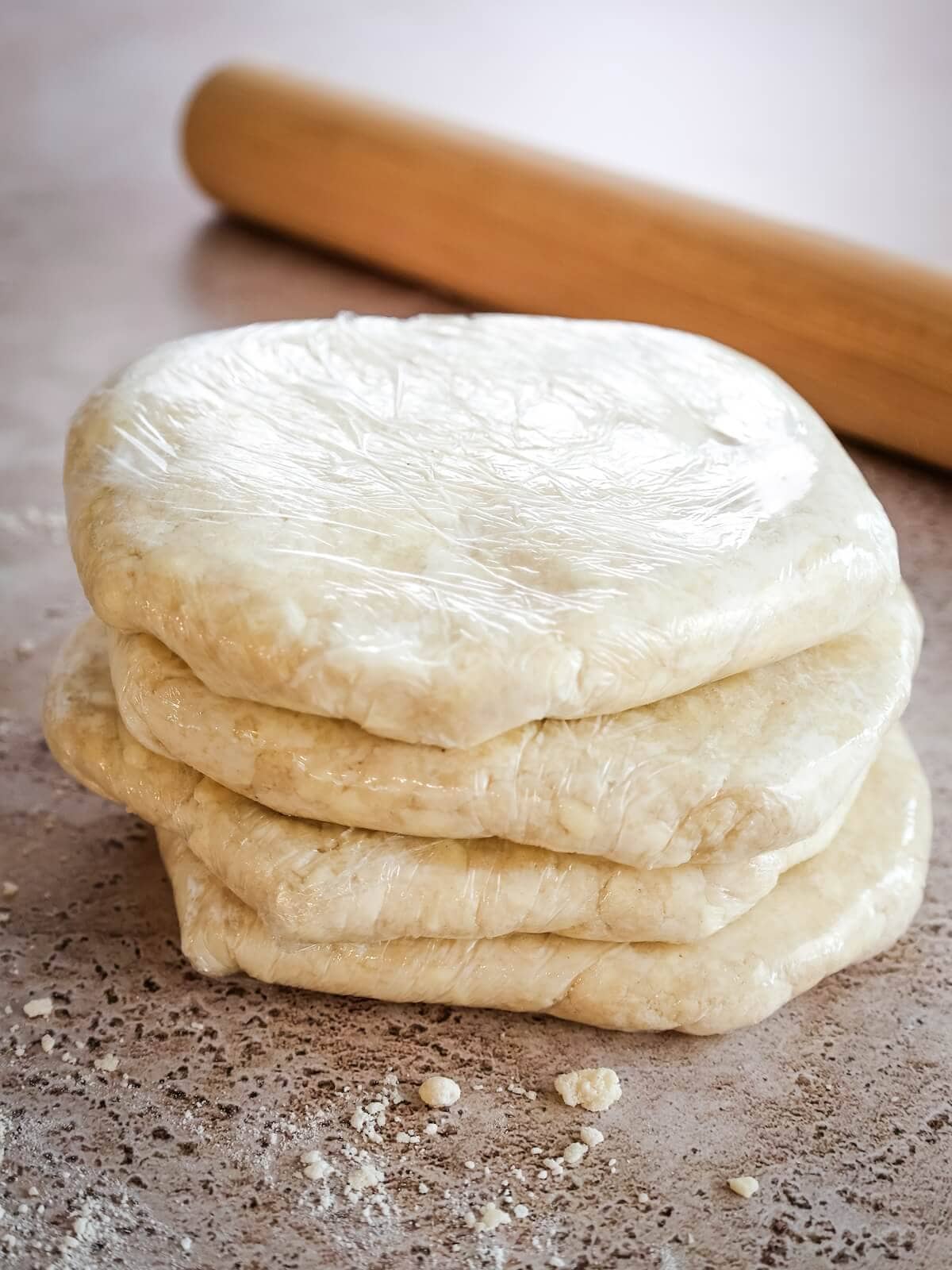
There's no doubt about it, everyone looks forward to classic pie recipes around the holidays.
Just thinking about Thanksgiving gets me in the mood for a big slice of Pumpkin Cream Pie and Gingered Coconut Pecan Pie! But, pie really is a delicious dessert for anytime of the year.
Making pie crust can sometimes be intimidating (especially buttery, flaky pie crust!), but it doesn't have to be.
When I worked as a food editor, I made tons of pie every summer as we prepared Thanksgiving content for magazines. To say I learned a little about making pie crust is an understatement.
Jump to:
Why you'll love this butter and shortening pie crust
Along the way, I developed an award-winning, foolproof recipe that turns out perfectly every time. You'll be blown away by how easy it is to make and how much better it tastes than pre-made frozen crusts. I can't wait to share my behind-the-scenes, expert tips so that you can make the perfect pie crust, too!
It takes a few times to get the hang of making pie crust. Once you do it's as easy as, well, pie! Here's what you'll love about this recipe:
- Uses butter and shortening: A crust made with butter and shortening is the secret to perfection! The butter gives it amazing flavor and crispness, and the shortening makes it tender and flaky.
- Easy food processor method: Using a food processor takes all the work out of making pie crust. It's super fast, and it helps to prevent overhandling the dough which can make it tough.
- Make ahead and freezer friendly: I prefer the taste and texture of homemade pie crust, and this recipe makes pie prep easy at the holidays. Make it in advance and store it in the freezer until you are ready to bake.
This was my very first pie crust that I've ever made! ... I was so nervous it wouldn't come out ... It came out as the lightest, flakiest, most tasty crust I've ever had in my life. And I've tried, and disliked, a lot of pie crust in the last 35 years! Crisp bottom, light and airy texture, it practically came out like shortbread. I'll be using this recipe (and these tips) for the rest of my life! Now I just gotta write it down in my little recipe book so I don't forget the details, haha. Thank you so much.
- Jason
Ingredients
You'll likely have everything you need on hand for this butter and shortening pie crust. Check out these tips as you gather everything to get started.
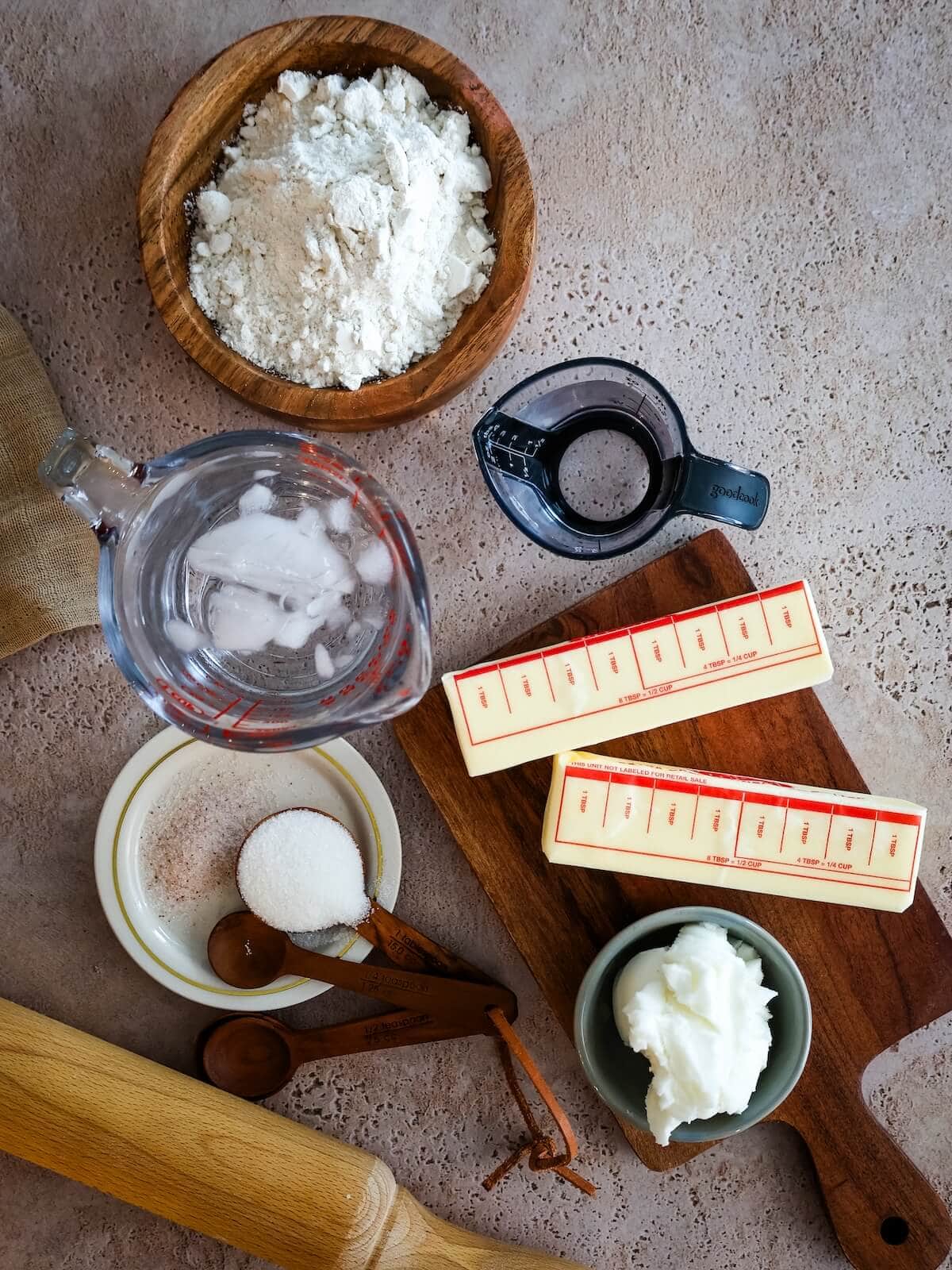
- All-purpose flour: Measure your flour carefully. Use a spoon to scoop flour into a measuring cup so that it's not compacted. Level off the top for accuracy.
- Salt: Brings out the flavor of the butter.
- Sugar: Just a little sweetness brings out the flavor of the crust.
- Shortening: The key ingredient for making a tender, flaky crust! It's best to use chilled shortening.
- Unsalted butter: I recommend using cold, unsalted butter for the best flavor. Cube the butter before adding it to the food processor to make it easier to blend.
- White vinegar: Makes your crust crumble-proof and adds flavor and tenderness. The acid in the vinegar tenderizes the dough and like salt, brings out the flavor of the butter. It helps the dough brown and caramelize as well.
- Very cold water: Used to hold the dough together and adds to the texture of the final crust. Use a light hand to add just the right amount. Too much water will make your crust tough and too little will make it crumble and crack.
See recipe card for quantities.
Tara's tip: chill everything
Refrigerating everything—yes, even the flour—is key to creating tender, pliable dough. Warm ingredients make tough crust because they bind too quickly with the gluten in the flour.
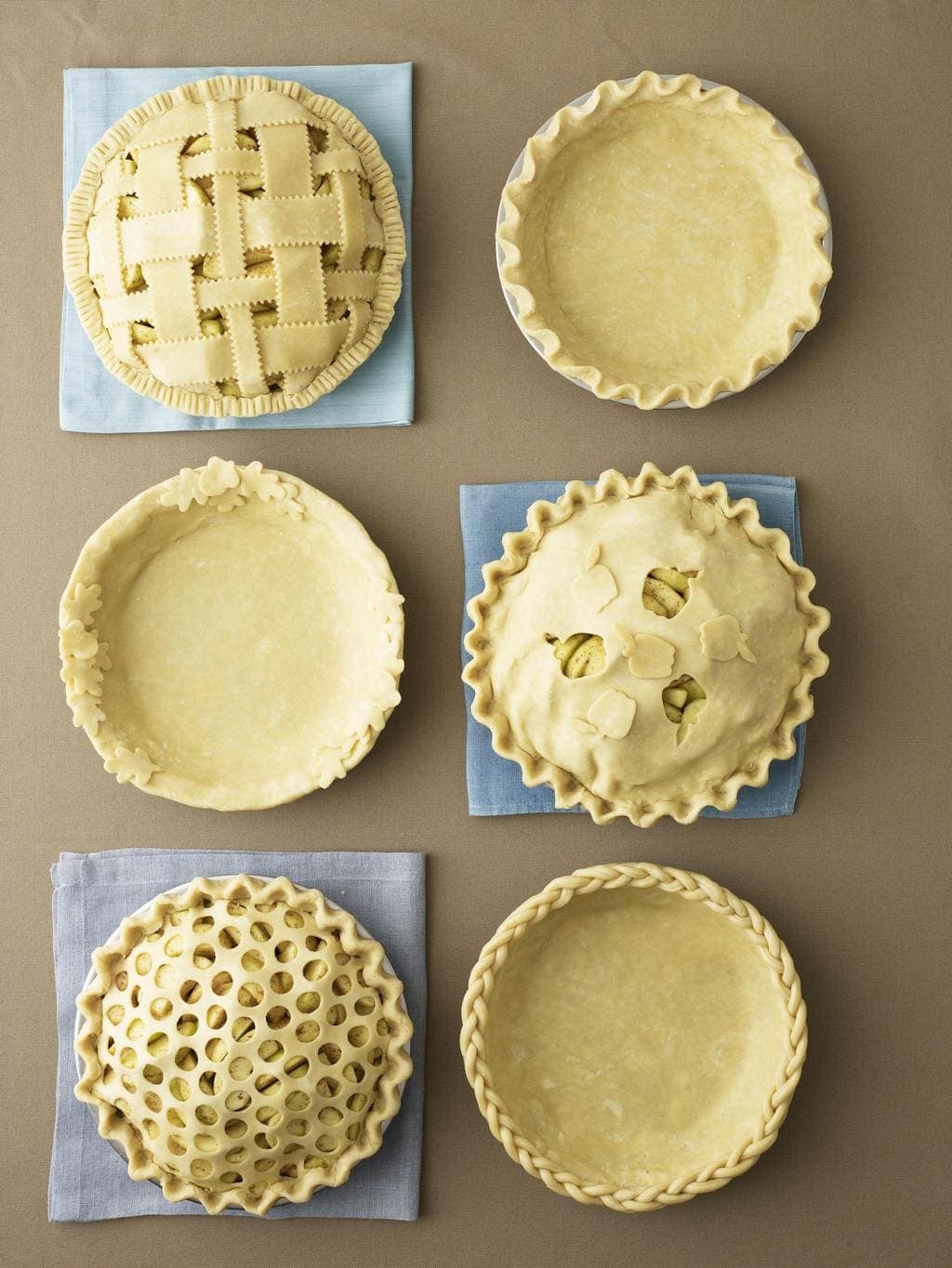
How to make the perfect pie crust
Don't you love a good step-by-step photo tutorial? Me too! Here's everything you need to know to make perfect pie crust.
- Mix dry ingredients: In a food processor, pulse together 2½ cups flour, 1 teaspoon salt, and 1 teaspoon sugar.
- Begin adding fats: Add ¼ cup chilled shortening and half the cubed, unsalted butter (6 tablespoons).
- Make coarse mixture: Pulse 8 to 10 times to make coarse crumbs with pea-sized chunks of butter.
- Add remaining butter and liquid: Mix 1 tablespoon of vinegar into a ½ cup of very cold water. Add the remaining butter to the food processor, and while pulsing processor, drizzle in just enough water mixture (5 to 8 tablespoons) to form dough.
- Test the dough: After adding 5 tablespoons of the vinegar-water, pinch test the dough. It should feel slightly dry but hold together when pinched. If it falls apart, add another tablespoon of the water mixture, pulse, and test again until you reach the right consistency.
- Form dough ball: Transfer the dough to a sheet of plastic wrap and use the wrap to bring it together into a ball. Handle the dough with your hands as little as possible.
- Halve dough: Use a sharp chef's knife or dough cutter to divide the dough ball in two equal halves.
- Wrap and chill: Wrap each half in plastic wrap and press into discs. Chill in the refrigerator for at least 1 hour before using.
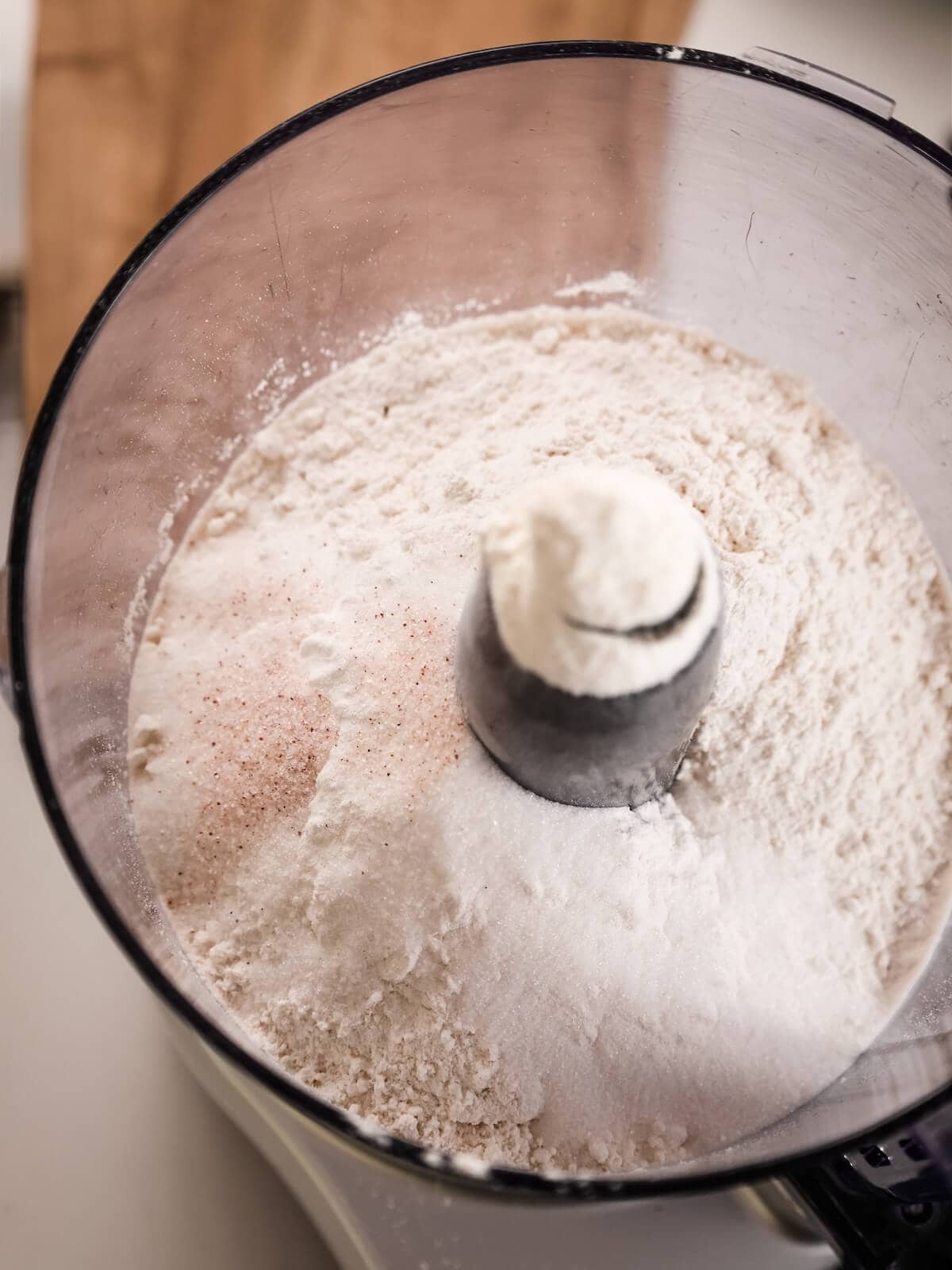
- Pulse dry ingredients: Quickly pulse together the flour, sugar, and salt.
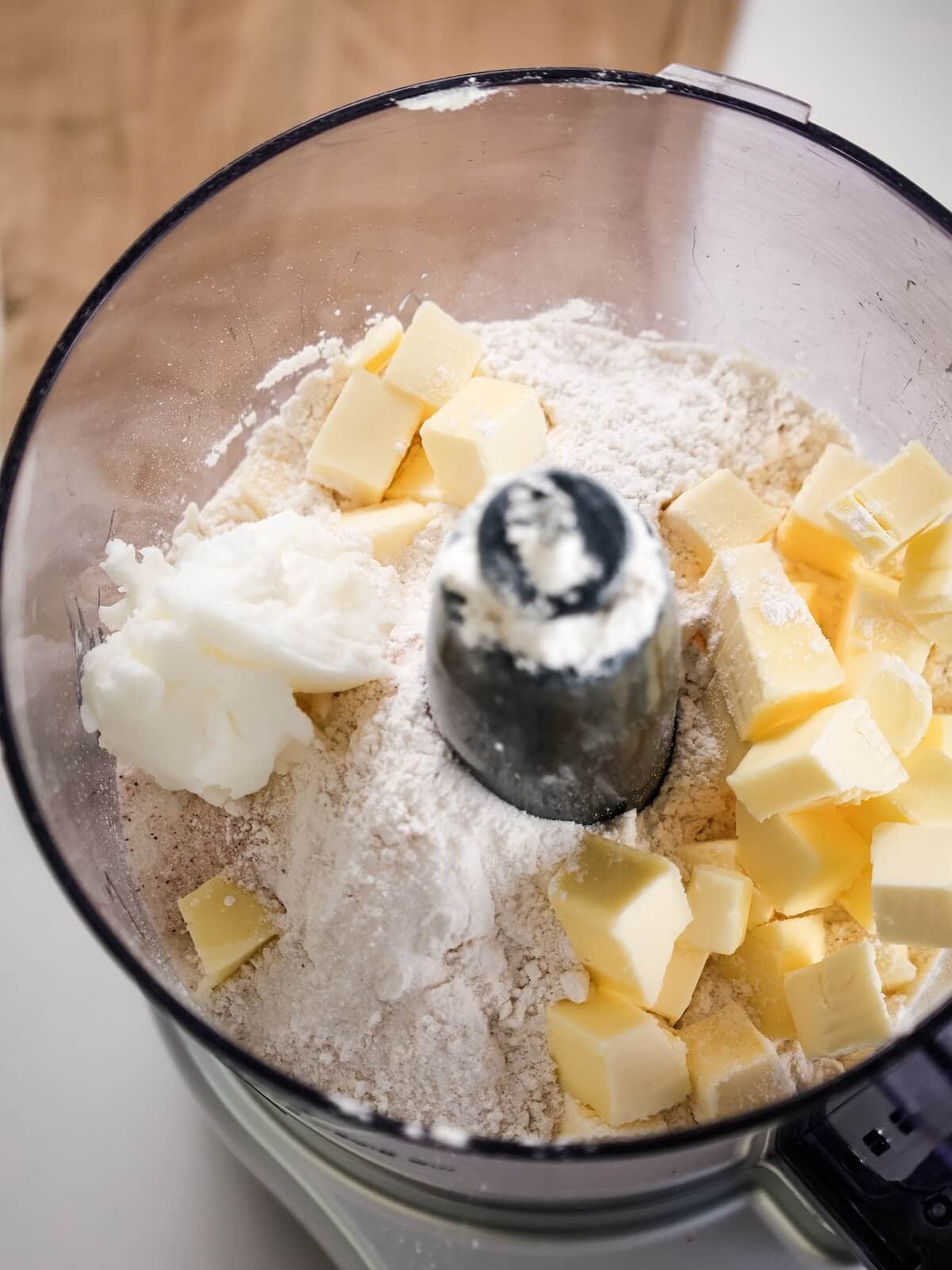
- Start adding fats: Add the shortening and half of the butter.
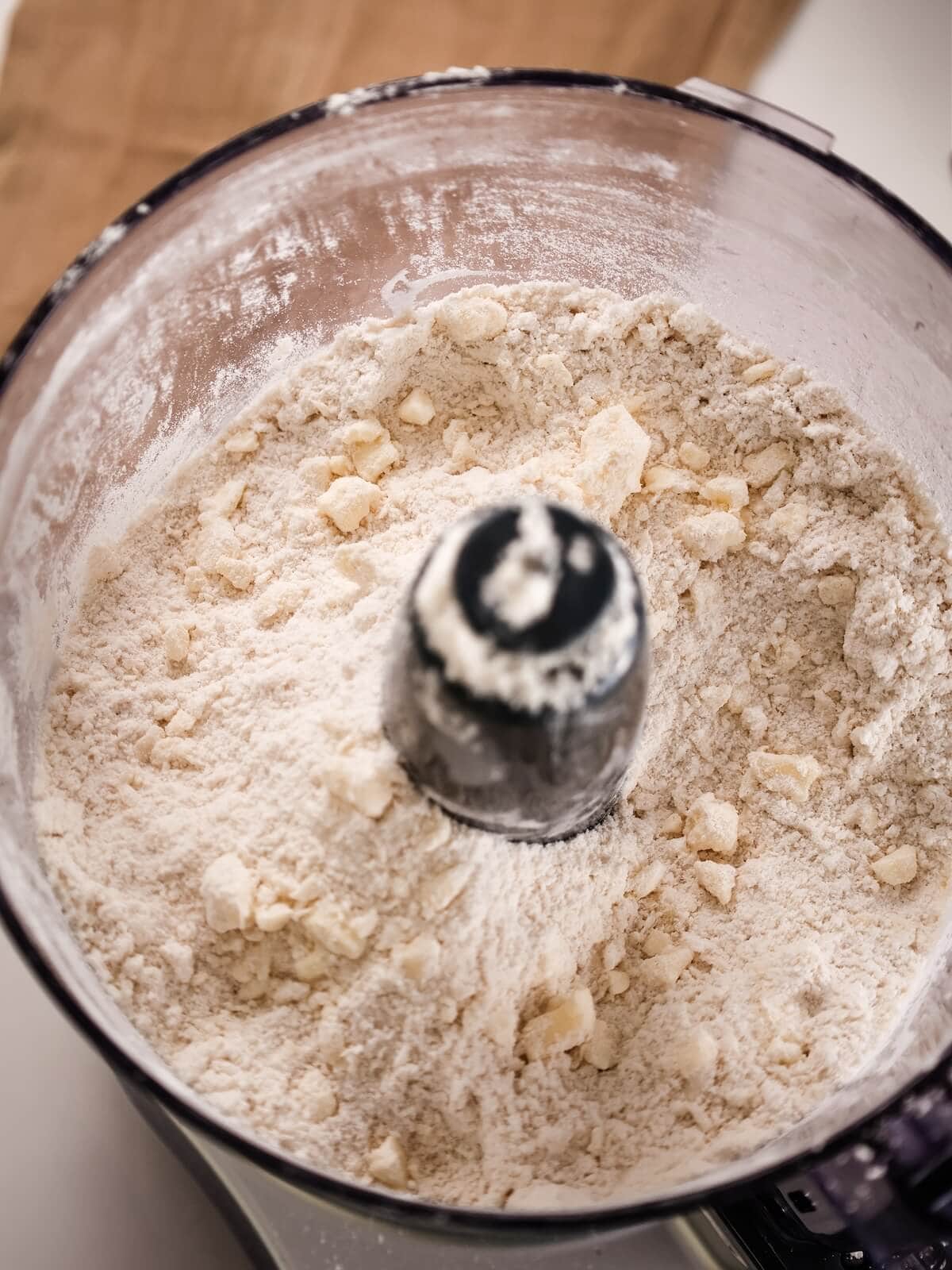
- Pulse until coarse: Pulse 8 to 10 times to make coarse crumbs with pea-sized chunks of butter.
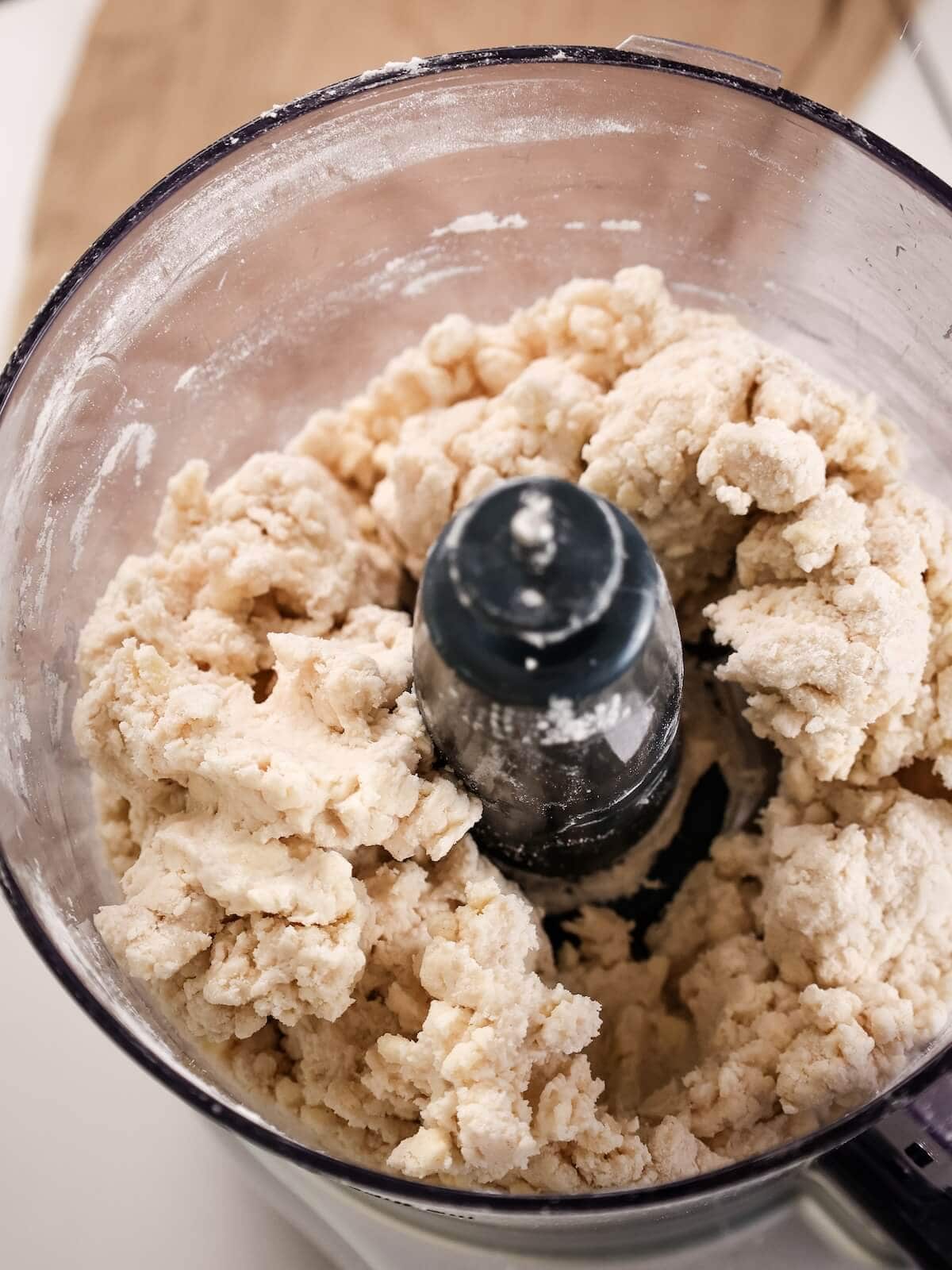
- Add remaining butter and liquid: Add remaining butter to the food processor. Mix together the water and vinegar, and add it to the dough a little at a time (about 5 to 8 tbsp) until it just holds together .
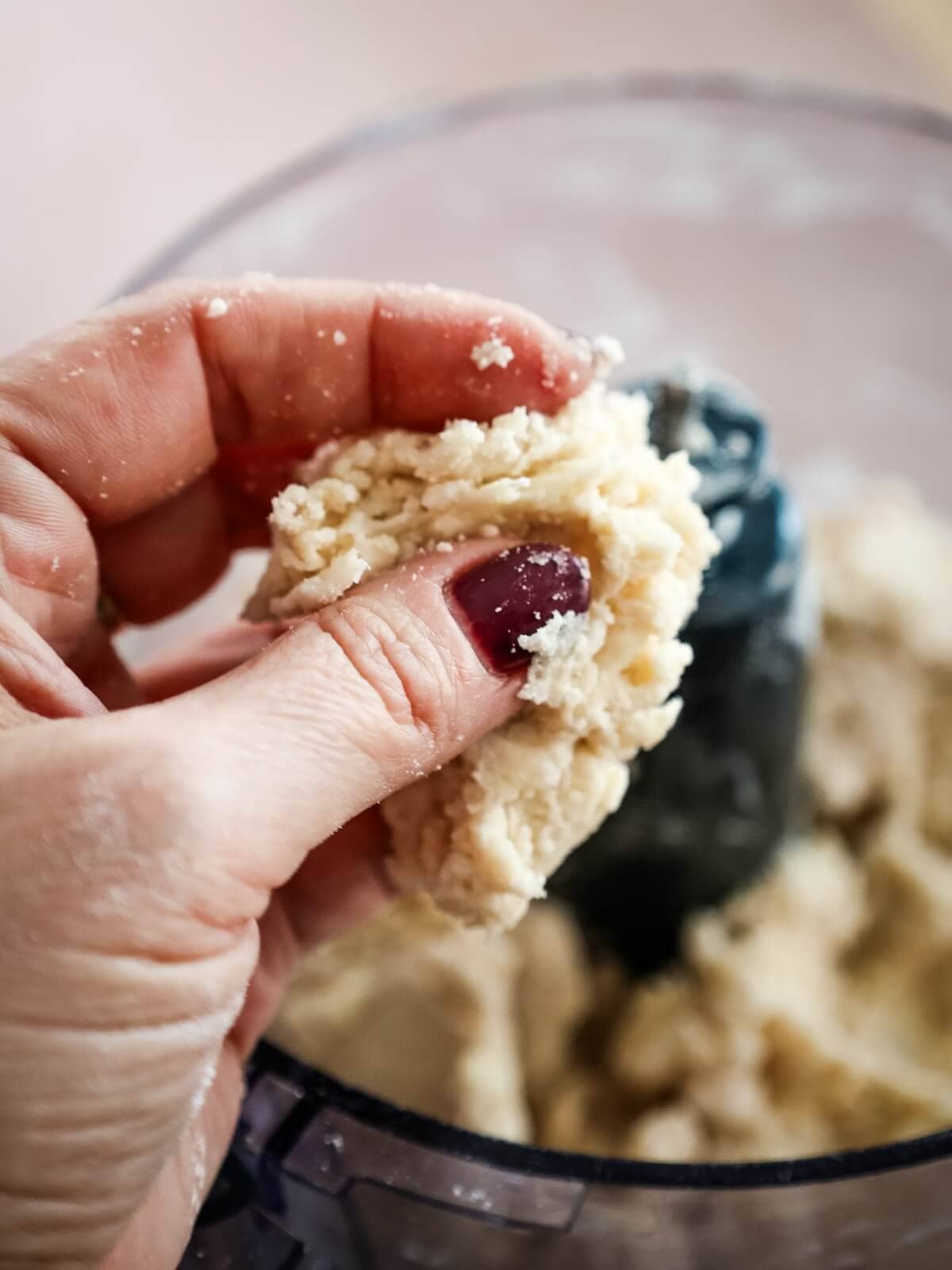
- Pinch test: Check to see if you've added enough liquid by pinching the dough. It should be slightly dry but hold together when pinched.
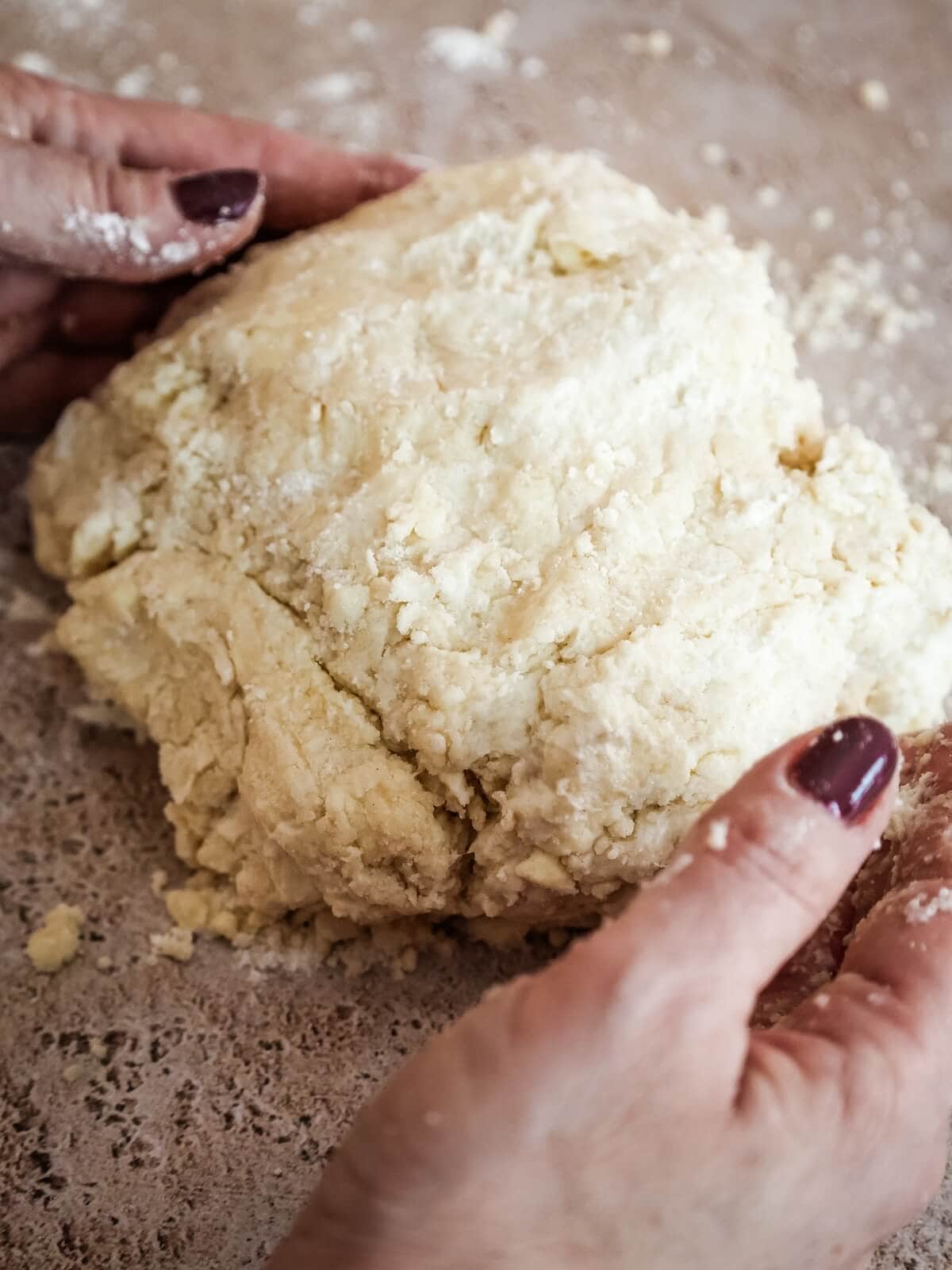
- Make dough ball: Transfer the dough onto a sheet of plastic wrap and form the dough into a ball.
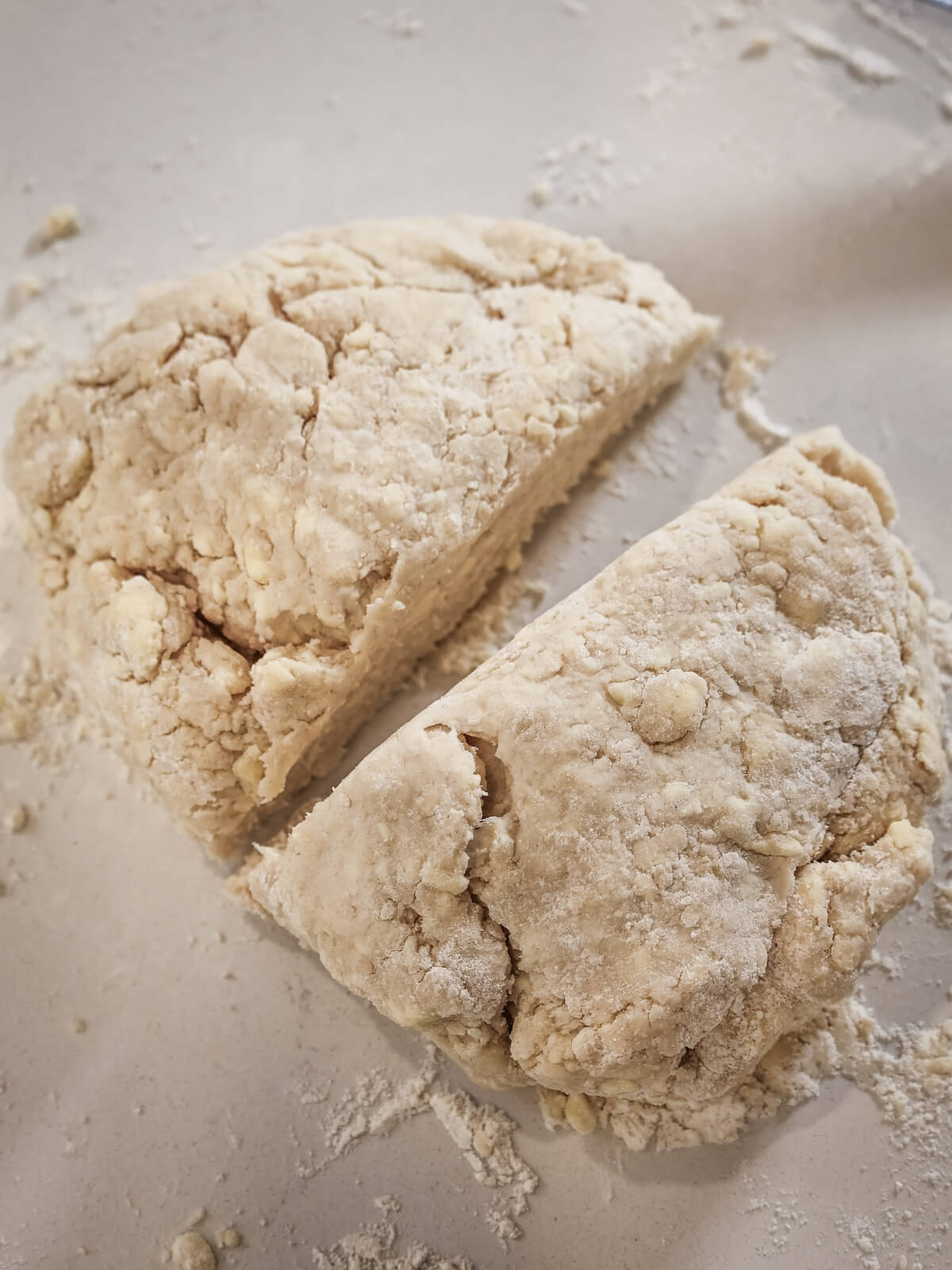
- Divide dough: Cut the dough into two equal halves.
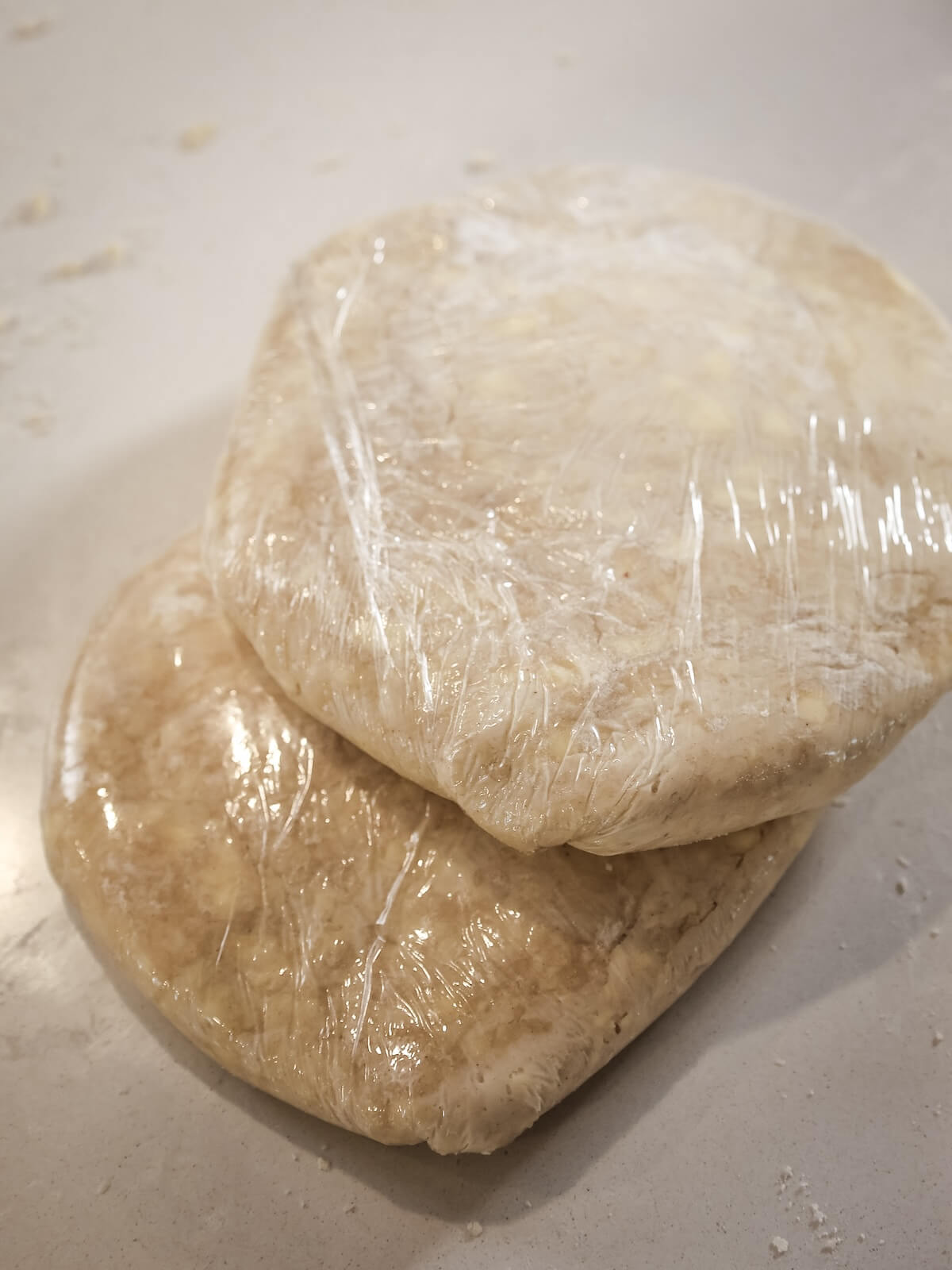
- Wrap and chill: Tightly wrap each half in plastic wrap and press into a disc. Chill for 1 hour before using.
How to use your butter and shortening pie crust
Now that you've made your perfect crust, it's time to make some delicious pies!
How to roll the perfect crust: Rolling out pie dough can be equally intimidating as making it! If you're feeling nervous, head over to my post about how to roll out pie crust, and learn how to avoid common problems.
How to make beautiful crusts: Now that you've mastered making pie crust, put your creativity to use and start embellishing your pies with fancy edges and toppings. My pie crust decorating tutorial will get you started.
How to pre-bake a crust: Pre-baking your crust is necessary when you're making a pie with a pre-made or no-bake filling. To pre-bake crust, roll into a 12- to 13-inch circle and gently transfer to pie plate. Trim edges (or decorate as desired) and chill or freeze until very cold. Line cold crust with a double thickness of foil or line with parchment. Fill with pie weights or dry beans and bake at 375ºF until edges are just golden, 12 minutes. Remove foil or parchment and weights; bake another 10 to 12 minutes until cooked through. Let cool before filling.
Equipment you'll need for making this crust
A food processor is great for quick preparation.
If you don't use a food processor, make sure to have a pastry blender.
I like a rod rolling pin, but you may prefer a standard rolling pin or one with tapered edges like this French style rolling pin.
You can use a glass pie plate or metal pie tins for the final pie.
Storage and make-ahead instructions
Keep in mind that this pie crust needs to be chilled for at least 1 hour before use.
Refrigerate: The dough can be wrapped in plastic and stored in the refrigerator for 3-4 days.
Freeze: Or, freeze your wrapped dough discs for up to 4 months. Thaw in the refrigerator and then use as normal.
Top 5 tips for perfect crust
1 Start with chilled ingredients
Chilled ingredients won't bind as quickly with the gluten in the flour and help to make soft, pliable dough.
2 Use shortening and butter
Shortening provides flakiness while butter adds flavor; combining the two gets you the best of both worlds.
3 Add water carefully
Adding the right amount of water is crucial: too much water makes the crust tough and not enough makes it crack and fall apart. Add conservatively until the dough holds together when pinched.
4 Crumble-proof your crust
Don't leave out the salt and vinegar! They tenderize the crust and add flavor.
5 Roll the right way
Lightly flour your work surface, then roll dough from the center outward to create a circle. Lift and move the dough frequently as you work so it doesn’t stick to the surface. Avoid stretching it: stretched dough shrinks during baking.
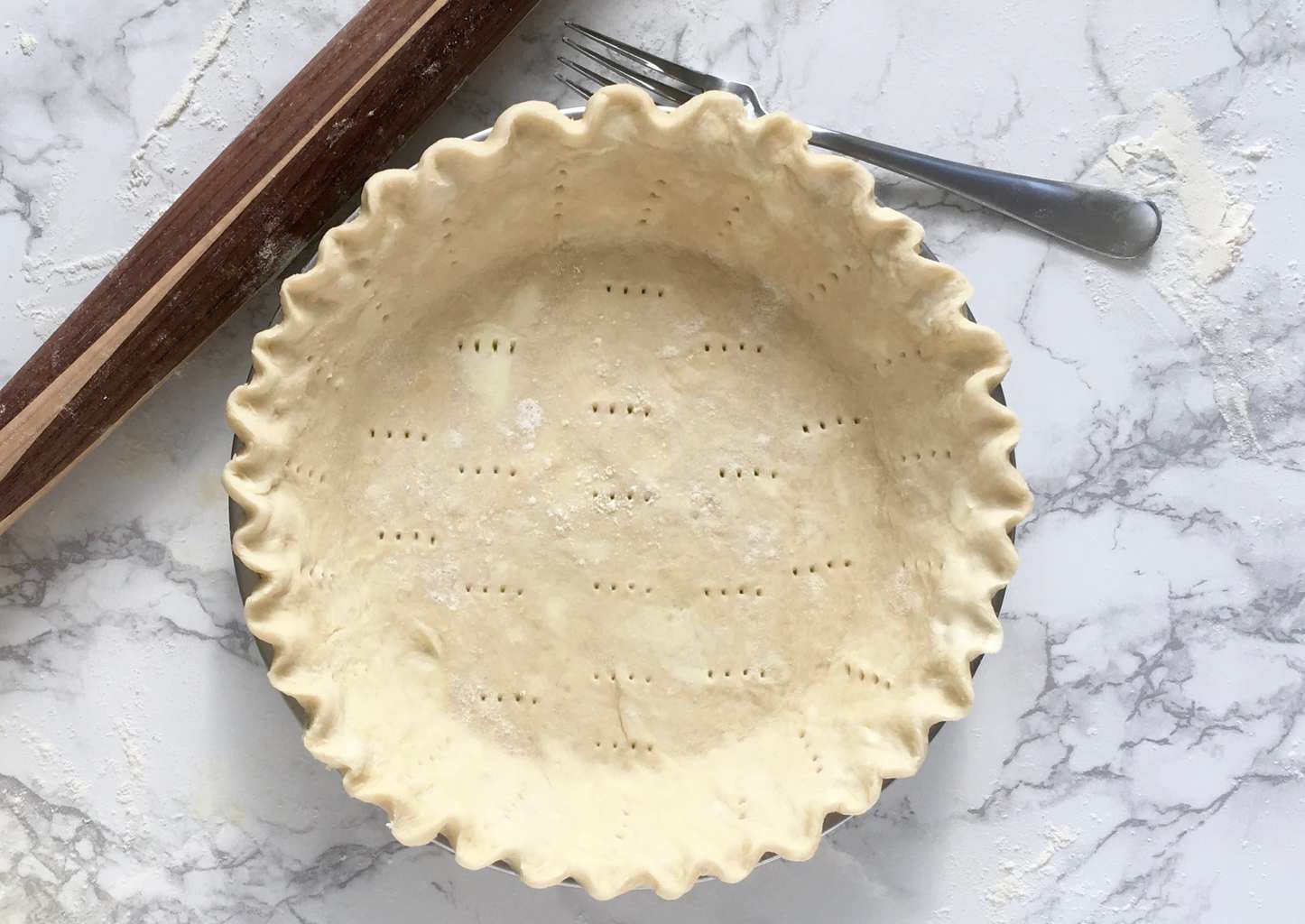
FAQ
Everyone has different methods and different types of recipes for making pie crust. I actually like to make several different kinds of pie crust depending on the type of dessert I'm making. Sometimes I use an all butter crust when I want a sturdy and crisp shell. My amazing-baker mother uses an all shortening recipe when she wants a very tender crust. So, it's hard to say that one type of crust is better than another universally. They all have a place.
However, a butter and shortening crust is my go-to for the ideal combination of flavor and texture that can be used with almost anything, It's forgiving to work with, easy to roll out, and practically impossible to mess up.
White vinegar is used in this recipe to add flavor and make it crumble-proof (tenderized). There are several different ingredients that you can use to replace white vinegar such as vodka, lemon juice, or even apple cider vinegar. Each provides a different hint of flavor, but since they are acidic liquids, they will tenderize your crust just like white vinegar. I personally like the flavor of white vinegar the best, but feel free to experiment to see what you prefer.
Rate this recipe! ⭐⭐⭐⭐⭐
Scroll to the bottom of the page to rate and comment on this recipe. Leaving comments, questions, and ratings helps other too!
Recipes for Pies and Tarts
📖 Recipe
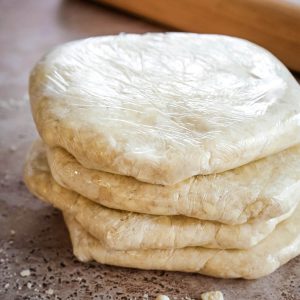
Perfect Pie Crust (Butter and Shortening)
Ingredients
- 2½ cups all-purpose flour
- 1 teaspoon salt
- 1 teaspoon granulated sugar (can add up to 1 tablespoon, if desired)
- ¼ cup chilled shortening
- 12 tablespoons (1½ sticks) cold, unsalted butter (cut into pieces)
- 1 tablespoon white vinegar
- ½ cup very cold water
Instructions
- In a food processor, pulse together the flour, salt and sugar.
- Add the shortening and half the butter. Pulse 8 to 10 times or until mixture is coarse crumbs and some of the butter is pea-size. (Alternatively, combine in a bowl using a pastry blender or a fork.)
- In a measuring cup, combine the vinegar with the very cold water. Add the remaining butter to the food processor, and while pulsing the processor, drizzle in just enough water mixture to form dough, 5 to 8 tablespoons.
- After adding about 5 tablespoons of the vinegar-water, pinch test the dough. It should feel slightly dry but hold together when pinched. If it falls apart, add another tablespoon of the water mixture, pulse, and test again until you reach the right consistency.
- Transfer dough to a sheet of plastic wrap and use the wrap to bring the dough together in one ball.
- Halve dough, wrap each half in plastic wrap and press into discs. Chill 1 hour or until ready to use. May be kept refrigerated for 3 to 4 days or frozen for up to 4 months.
- To pre-bake crust, roll into a 12- to 13-inch circle and gently transfer to pie plate. Trim edges (or decorate as desired) and chill or freeze until very cold. Line cold crust with a double thickness of foil or line with parchment. Fill with pie weights or dry beans and bake at 375ºF until edges are just golden, 12 minutes. Remove foil or parchment and weights; bake another 10 to 12 minutes until cooked through. Let cool before filling.
- Follow instructions in individual pie recipes for other preparations.
Video
Notes
Nutrition
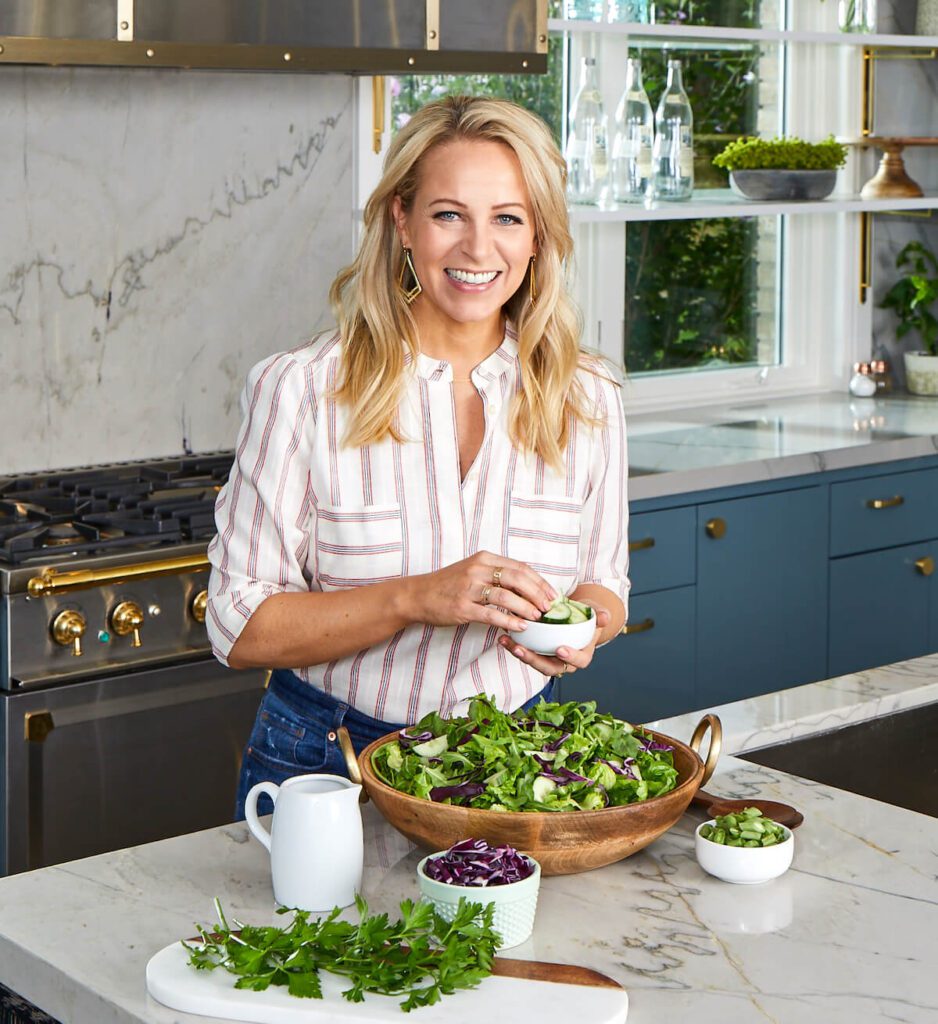
Tara Teaspoon
I’ve been in food publishing for over 25 years, creating recipes & food-styling for magazines, books, television, food brands, & advertising. With two cookbooks under my belt and thousands of my recipes at your fingertips, I hope you'll be inspired to spend more time in the kitchen!

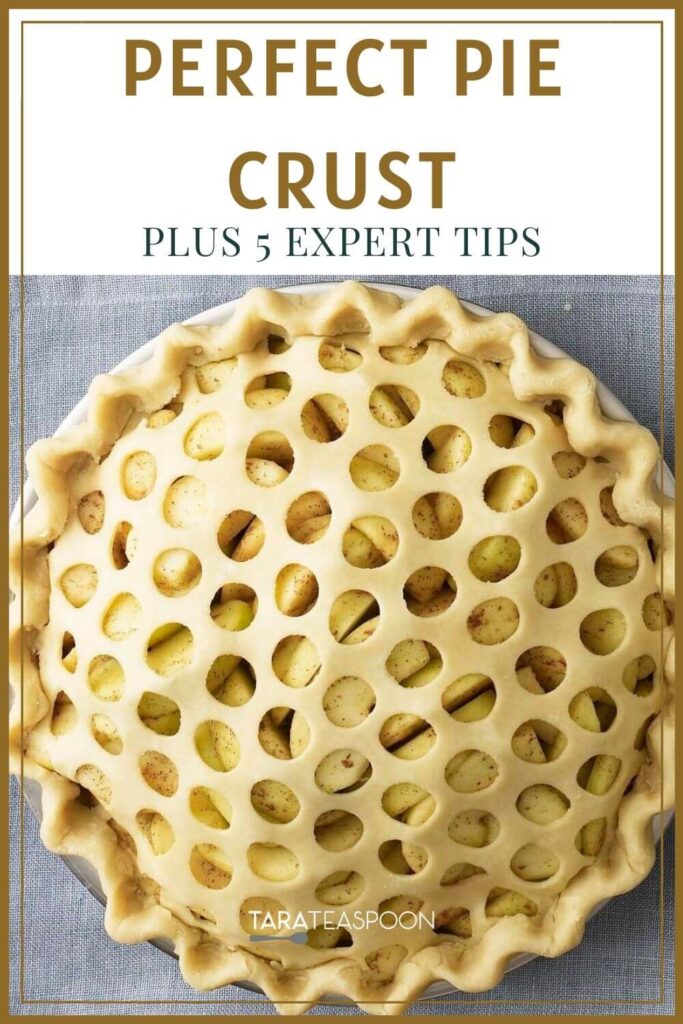
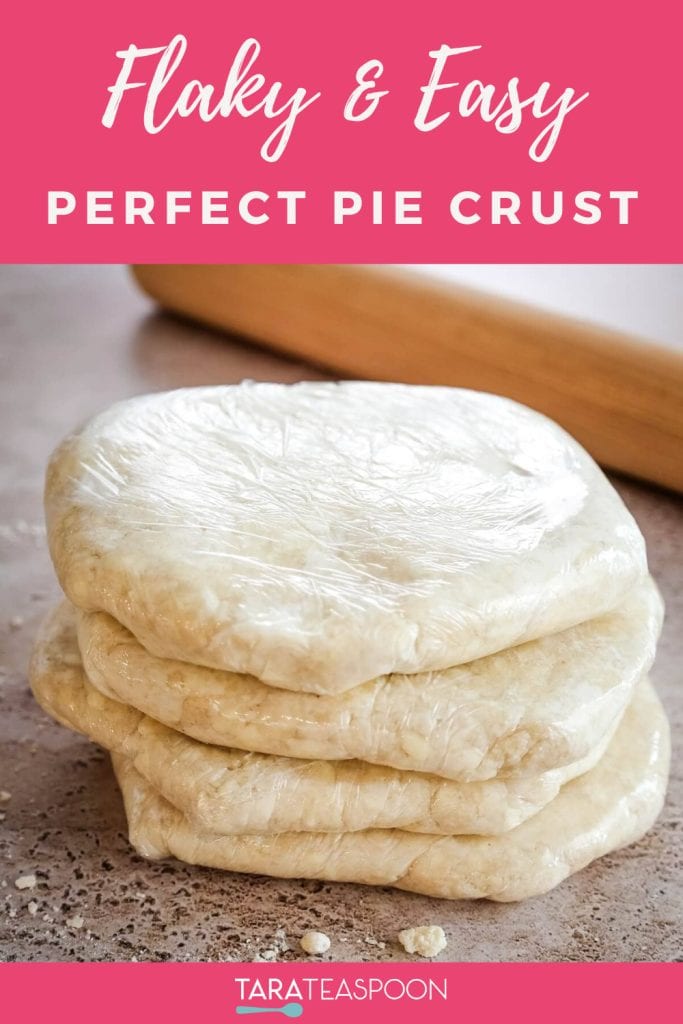
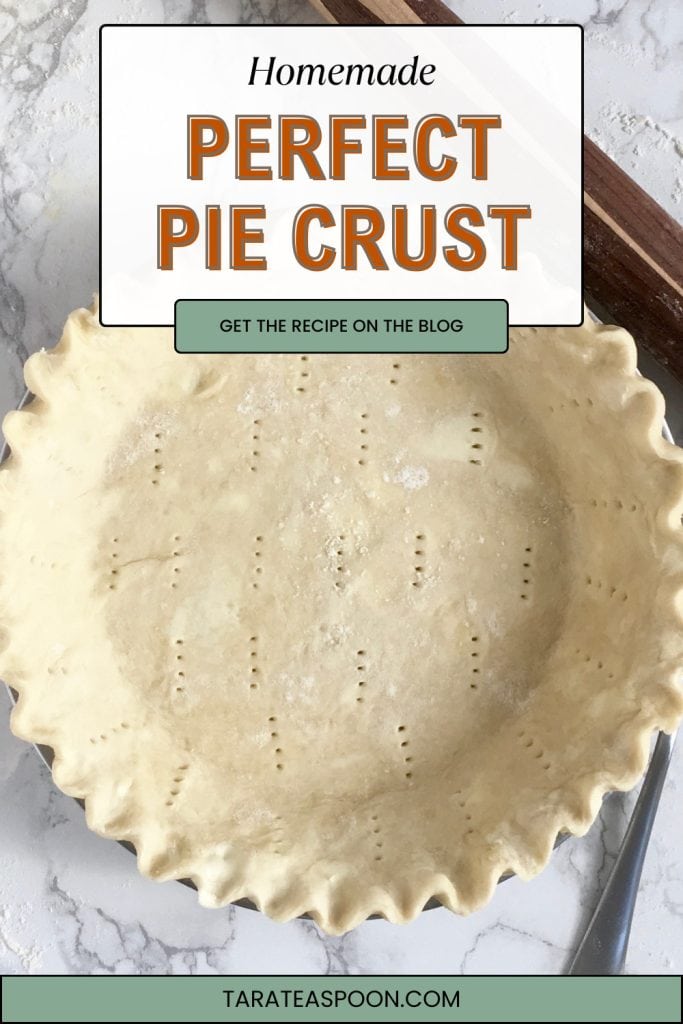
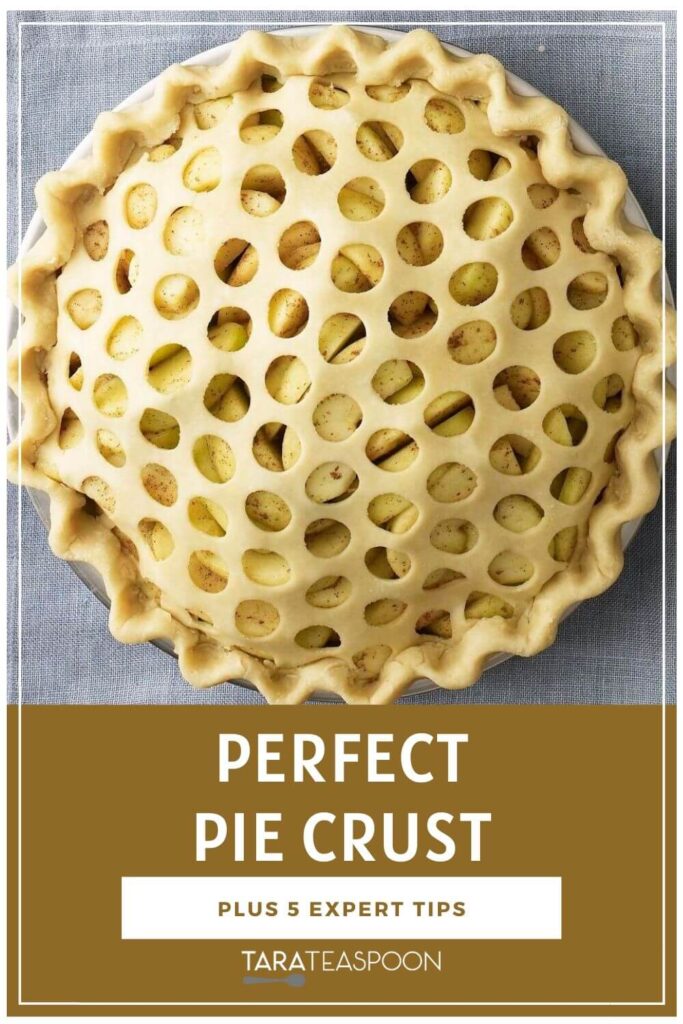
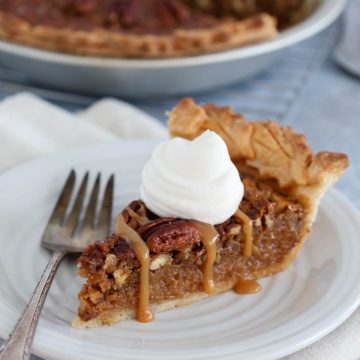
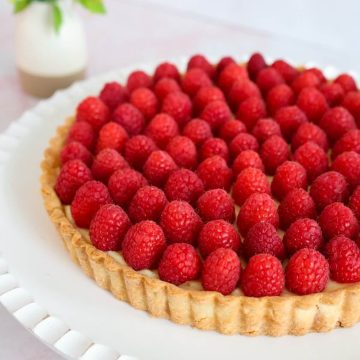

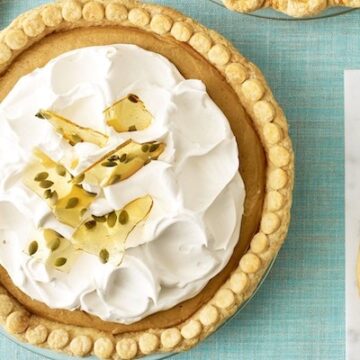
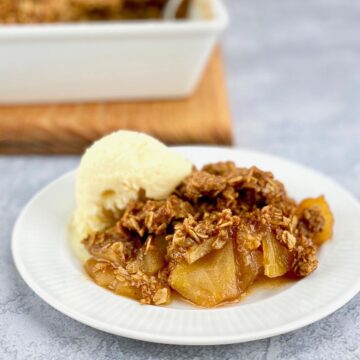
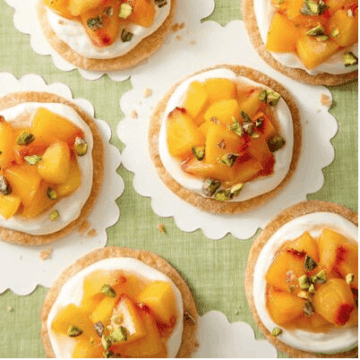
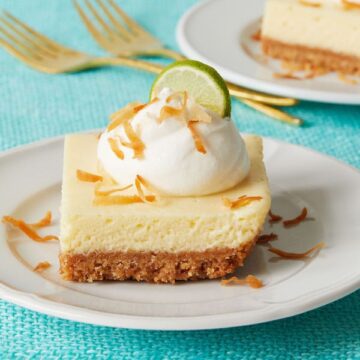

joy says
my dad loves making pies. i shared your recipe with him. also, i wanted to share that i love your FAQs and Tips section.
Tara Teaspoon says
Oh good! Thanks for letting me know. I hope it all helps!
Renata Feyen says
Sounds perfect. Never ate those pies, because they are not that common in Belgium, but it sounds great that you can keep this dough for 3 to 4 days in the fridge